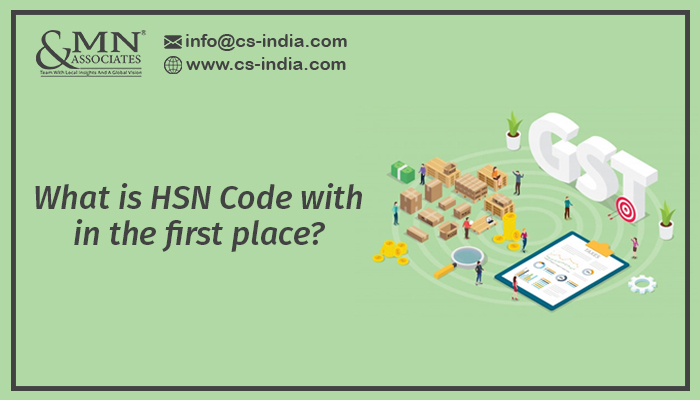
What is HSN Code within the first place?
A Harmonized System of Terminology, or HSN, was planned and developed by the global consumer Organization. World consumer organization with the vision of classifying products from everywhere the globe in a systematic and logical manner. HSN is wide broadband adapted in over 200 countries, covering a staggering ninety-eight of products over the globe.
It’s a 6-digit uniform code that classifies over 5000 products and it’s conjointly accepted worldwide. This set of outlined rules is employed for tax uses in distinguishing the speed of tax applicable to a product in a country. The quantum of product exported in and out. It’s an important point to appear over the mobility of products throughout the globe.
The resultant figure is the six-digit code.
It is the simplest logic of classification and identification used by International Trade. It has been useful in reducing efforts and prices associated with advanced processes of International Trade.
HSN is an Asian country:
They have been through the thought of HSN, we tend to currently focus on understanding HSN from the Indian context.
India is prepared to own its terribly own products and services Tax that applies to any or all similar product and services. It embodies several indirect taxes and can cut down the pressure on the top client.
India has already been explicating the HSN system since 1986 within its central Excise and Customs regime. It’s a far more elaborate view that extra another 2-digit to the 6-digit structure. Indian manufacturers beneath GST are needed to follow a 3-tier structure of HSN.
The ones with an annual income of less than 1.5 Crores do not have to follow HSN.
The ones with an annual income of more than 1.5Crores but below 5 Crores can use the two-digit HSN codes
The ones with an annual income of more than 5 Crores use the four-digit HSN codes.
The ones dealing with the World Health Organization ar into imports or exports shall obligatorily follow the eight-digit HSN codes.
HSN codes are not made compulsory in the following cases:
- Those dealers who have a yearly income of less than 1.5Crores
- Those registered beneath the Composition theme of GST are excluded from the use of HSN Codes
- HSN Codes are vital during the time of filing GST returns as a result of GST returns being fully automated, it’ll be difficult for the dealers to transfer the outline being equipped. Thus, HSN Codes are mechanically chosen from the registration details of the dealer and will cut back from the efforts. Dealers have to watch out for selecting the proper HSN code when migrating to GST or making a recent registration.
HSN-wise summary of outward supplies
Sections HSN Code List:
- Section 1: alive animals, Animal goods
- Section 2: Vegetable goods
- Section 3: Animal or Vegetable Fats and Oils and their by-products, prepared edible fats, Animal or Vegetable wax
- Section 4: Prepared Food items, Beverages, Spirits and Vinegar, Tobacco and Manufactured Tobacco Substitutes
- Section 5: Mineral goods
- Section 6: Chemical goods or allied Industries
- Section 7: Plastics, Rubber
- Section 8: Raw hides and skins, Leather, Fur skins, saddlery and harness, travel goods, handbags and similar containers, articles of animal gut
- Section 9: Wood and articles of wood, Wood charcoal, Cork and articles of cork, Manufacturers of straw, of Esparto or of other Plaiting Materials, Basketwork, and Wickerwork
- Section 10: Pulp of wood or of other Fibrous Cellulosic Material, Recovered paper or paperboard, paper and paperboard, and articles thereof
- Section 11: Textile and textile articles
- Section 12: Footwear, Headgear, Umbrellas, Sun Umbrellas, Walking-sticks, seat-sticks, whips, riding-crops, and parts thereof, Prepared feathers and articles made therewith, Artificial flowers, Articles of human hair
- Section 13: Articles of stone, plaster, cement, asbestos, mica, or similar materials, ceramic products, glass, and glassware
- Section 14: Natural or cultured pearls, precious or semi-precious stones, precious metals, Metal clad with precious metal, and articles thereof, Imitation Jewelry, Coins
- Section 15: Base Metals and Articles of Base Metal
- Section 16: Machinery and mechanical appliances, electrical equipment, parts thereof, sound recorders and reproducers, television image and such recorders and reproducers, and Parts and Accessories of such article
- Section 17: Vehicles, Aircraft, Vessels and Associated Transport Equipment
Need guidance on different aspects of the business?
Write to us info@cs-india.com
